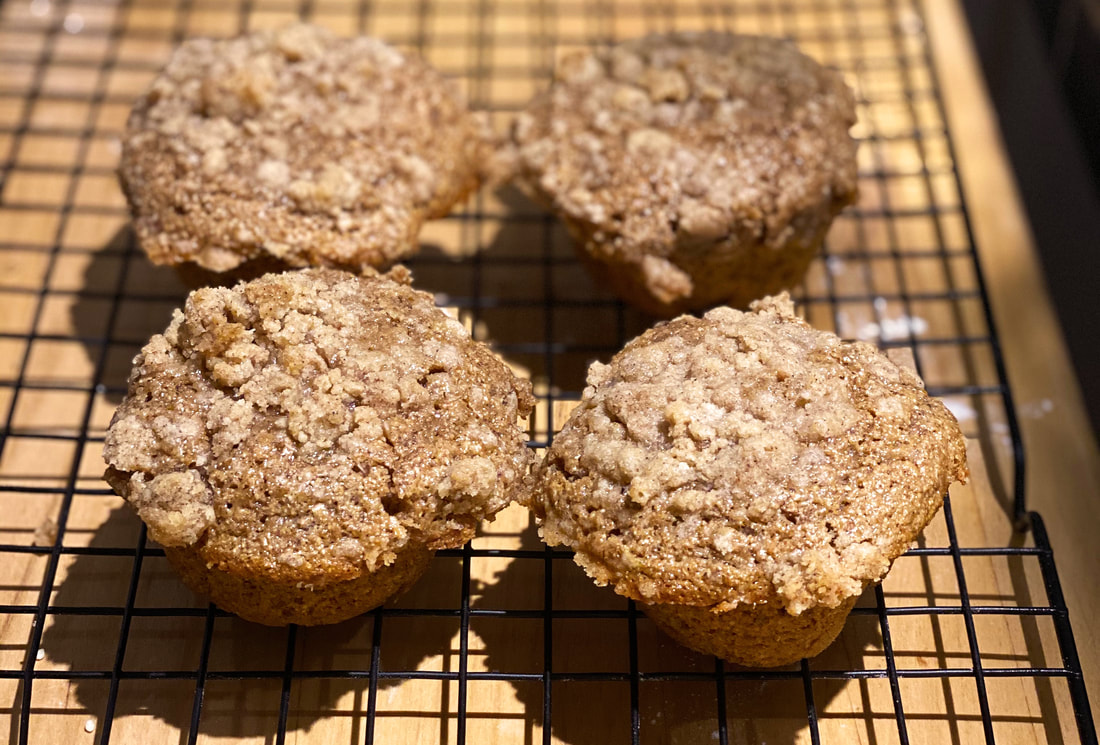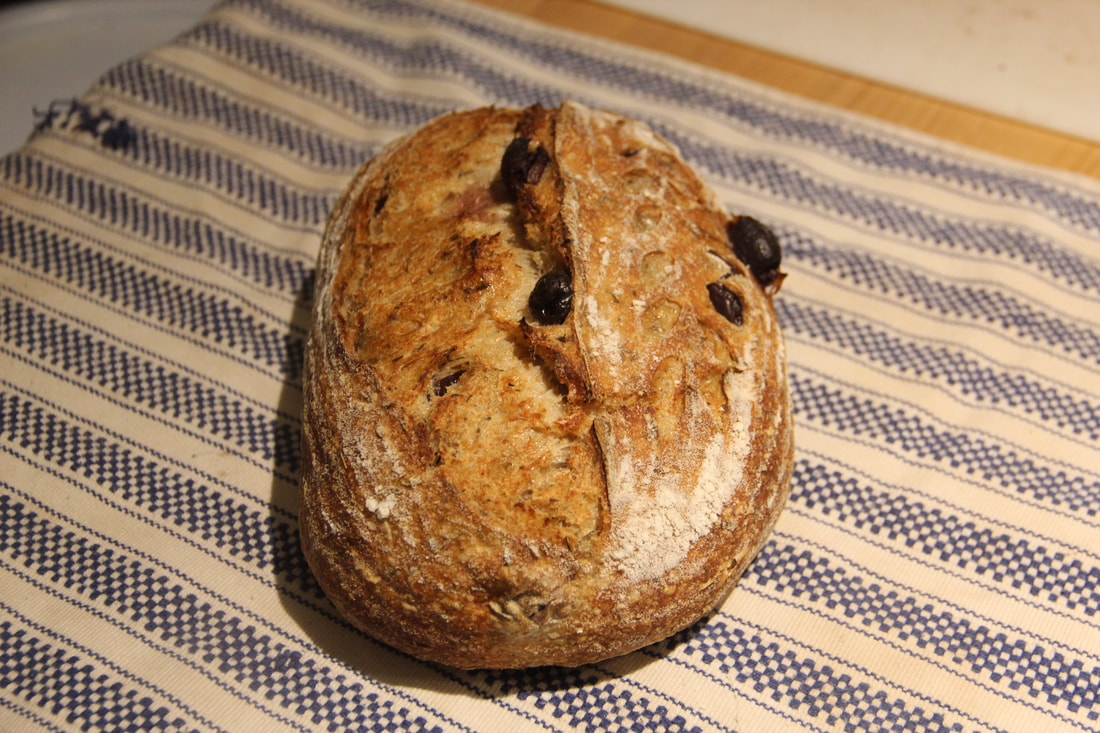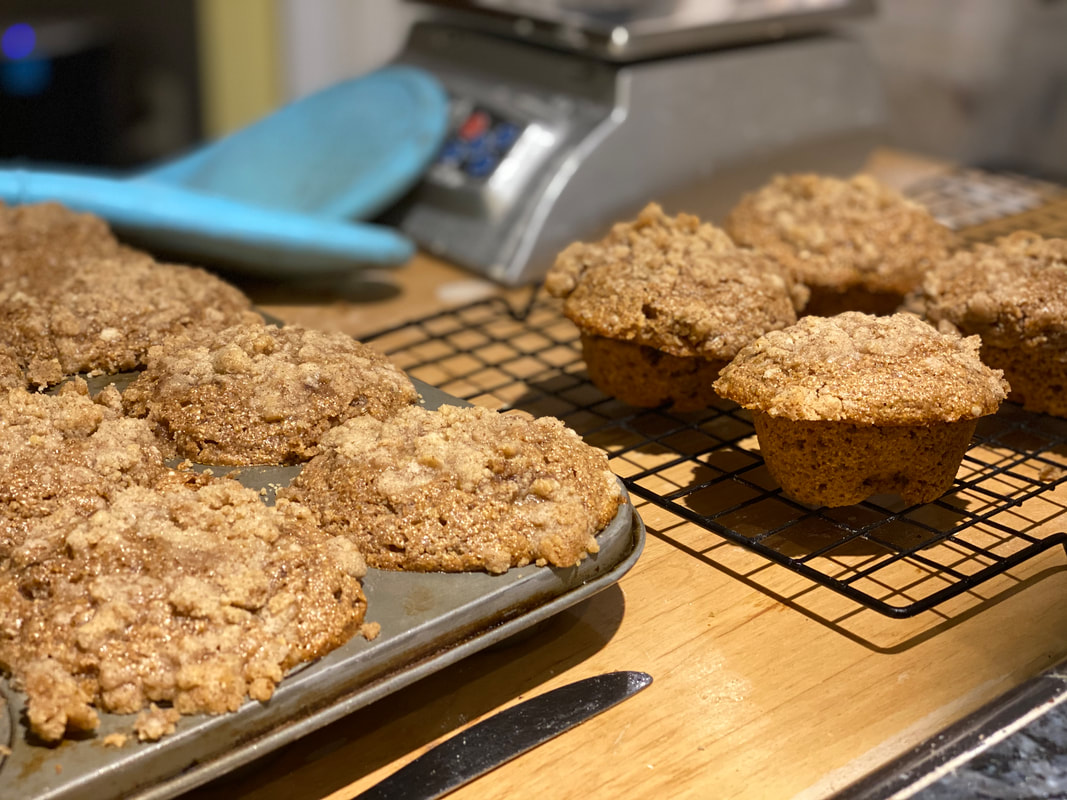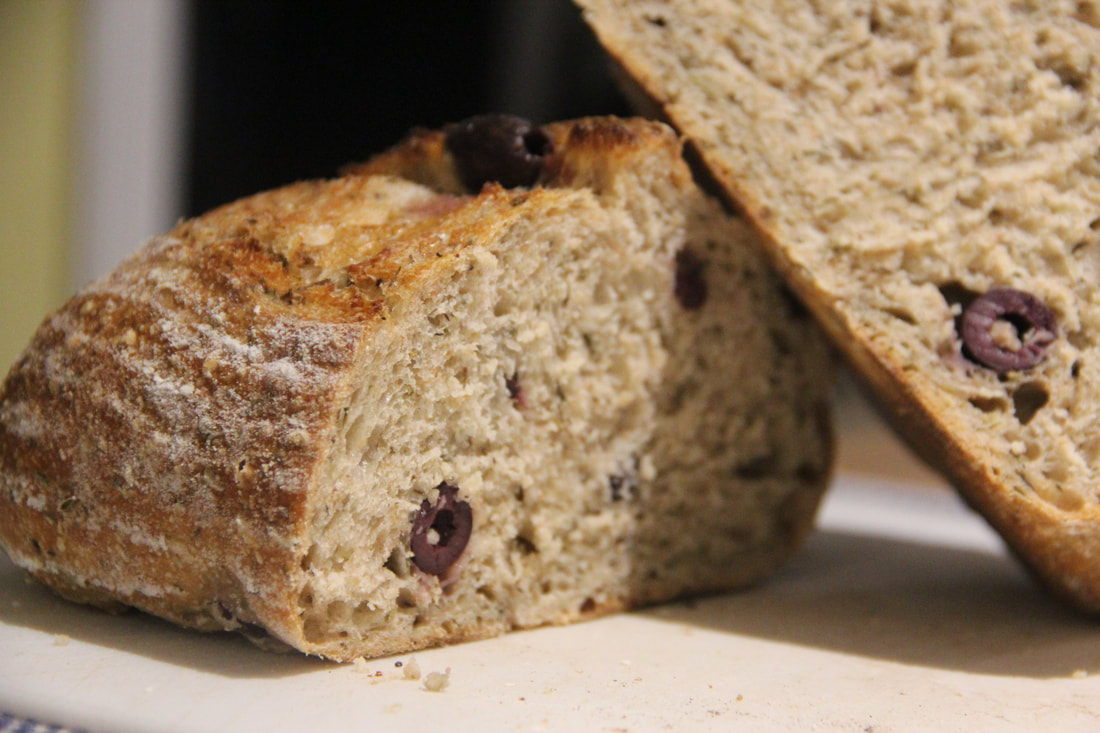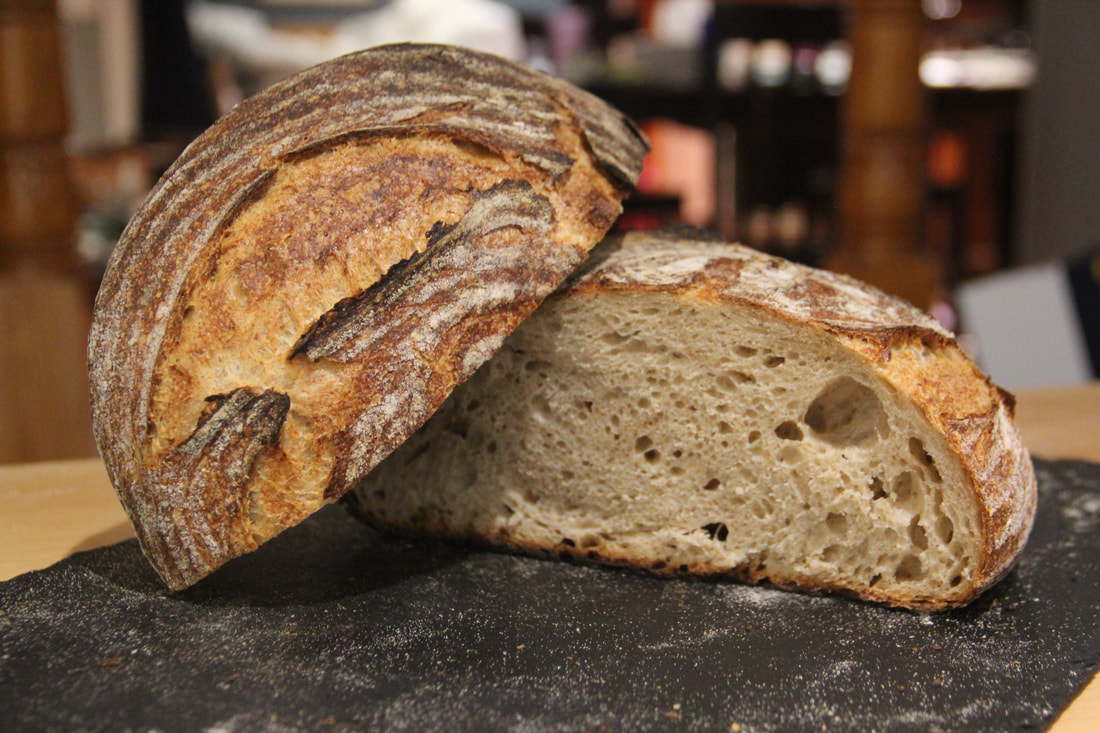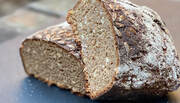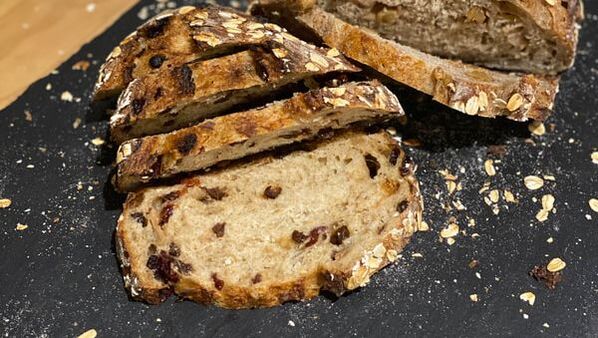|
SOURDOUGH BANANA MUFFIN RECIPE
The two constants in my kitchen are overripe bananas and excess sourdough starter. I prefer banana muffins to their denser companion, banana bread, which I always struggle to cook through. Plus, these are easy to freeze and then thaw individually when you need a sweet treat for breakfast! Recipe yields 12 muffins. MUFFIN INGREDIENTS
STREUSEL INGREDIENTS
For a dairy-free alternative, replace the butter and sour cream with vegetable oil, and use 1/2 cup honey in the streusel instead of the butter and brown sugar. SOURDOUGH BANANA MUFFIN PROCESS
0 Comments
OLIVE AND HERB SOURDOUGH RECIPE
This olive and herb sourdough is packed with salty, herby flavor, plus a subtle nuttiness from whole spelt flour. It even entranced me, a firm olive hater. I'm still far from an olive advocate, but after baking this bread for my olive-loving partner for a few years now, I finally see the merits of this briney fruit. LEVAIN
FINAL DOUGH
OLIVE AND HERB SOURDOUGH BAKER'S PERCENTAGES (a universal, slightly more technical way to share recipes that is well explained here, but you can also just ignore this) LEVAIN 100 percent hydration 50 percent rye 50 percent bread flour 25 percent ripe starter (aka 1:4 ratio) TOTAL DOUGH FORMULA 73 percent hydration (15 percent pre-fermented in levain) 67.5 percent bread flour (7.5 percent pre-fermented in levain) 25 percent spelt flour 25 percent olives 7.5 percent rye flour (pre-fermented in levain) 2 percent herbes de Provence 1.5 percent salt EQUIPMENT
OLIVE AND HERB SOURDOUGH PROCESS MIXING Evening
Morning
BAKING
|
|

